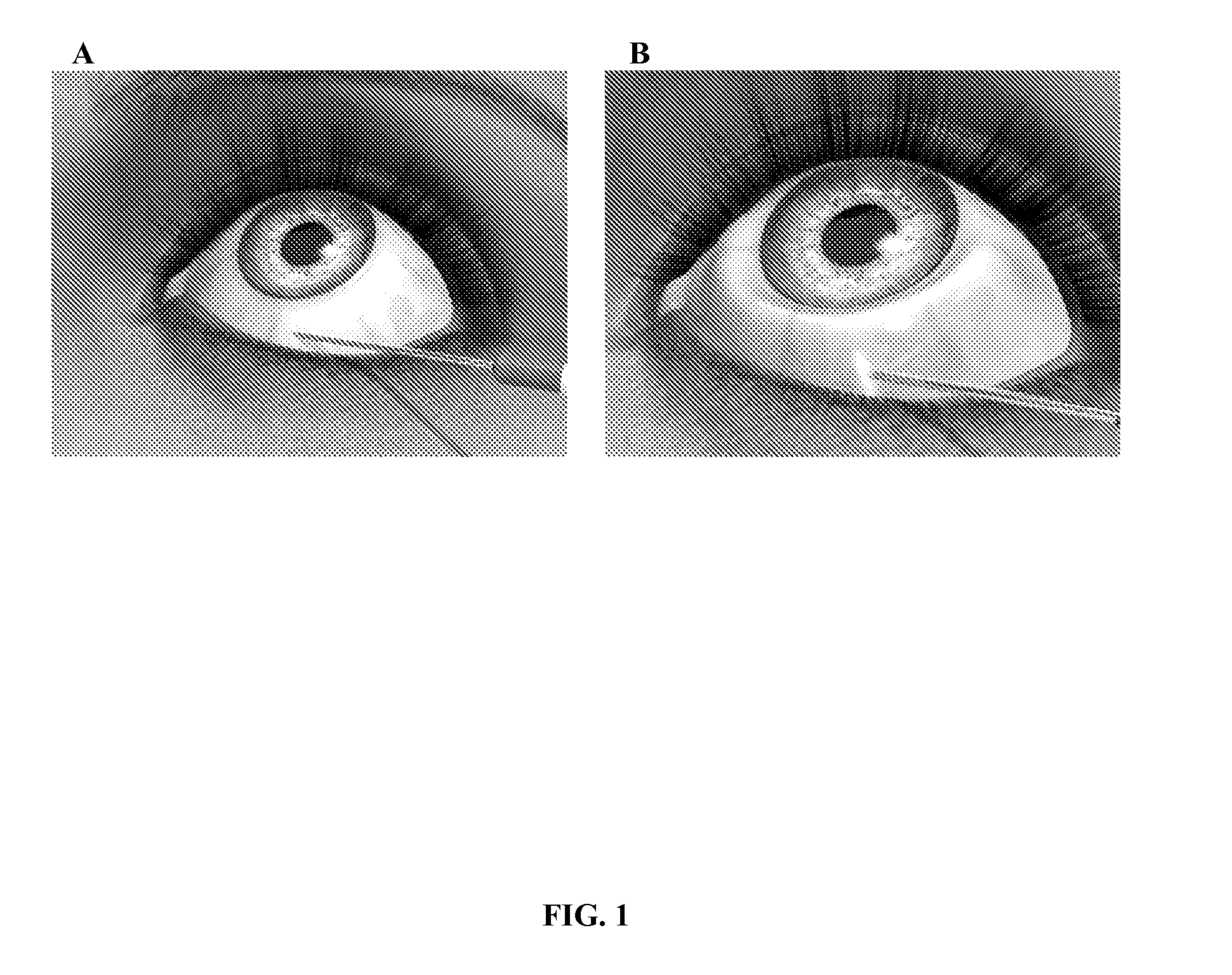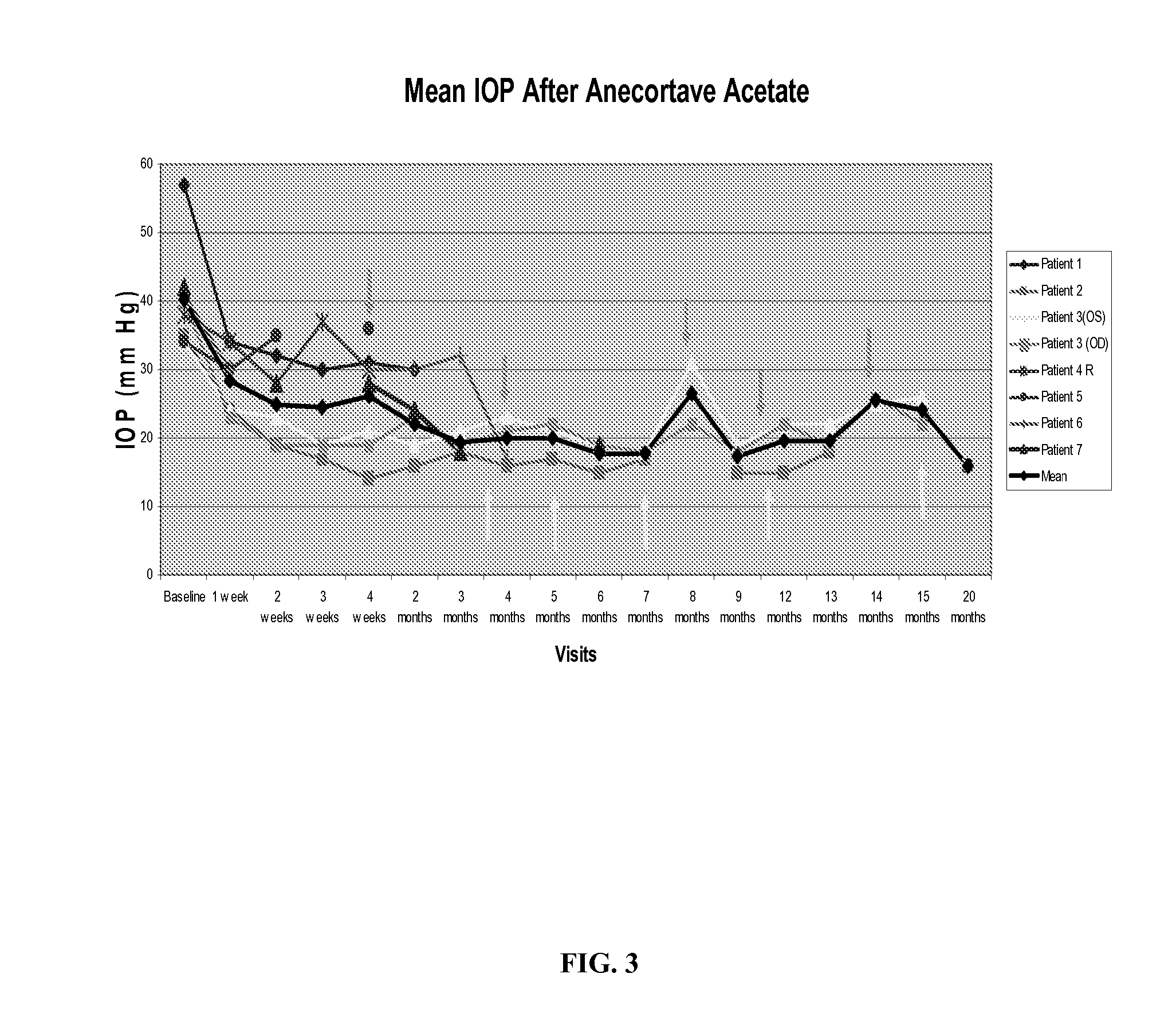Method for treating primary and secondary forms of glaucoma
a glaucoma and primary and secondary form technology, applied in the field of methods, can solve problems such as trabecular meshwork congestion, progressive visual loss, visual disability and blindness,
- Summary
- Abstract
- Description
- Claims
- Application Information
AI Technical Summary
Benefits of technology
Problems solved by technology
Method used
Image
Examples
example 1
[0077] The following formulation is representative of formulations suitable for use in the methods of the present invention.
IngredientAmount (wt %)4,9(11)-Pregnadien-17α,21-diol-3,20-0.1-5.0dione-21-acetateTyloxapol0.01-0.05HPMC0.5Benzalkonium chloride0.01Sodium chloride0.8Edetate Disodium0.01NaOH / HClq.s. pH 7.4Purified Waterq.s. 100 mL
example 2
[0078] A single administration of approximately 24 mg of anecortave acetate was given via subtenon's administration in the inferior or inferior temporal quadrant to 5 eyes of 6 patients with primary open angle glaucoma.
Methods:
[0079] An investigator IND and IRB approval was obtained. All patients gave informed consent. An inferior AJD was given under topical anesthesia and we followed patients at weeks 1, 2, & 4; and monthly thereafter. Prior glaucoma medications were not changed throughout study.
Results:
[0080] Six subjects with glaucoma and IOP≧23 mmHg (POAG [4], PDS [1], PXF [1]) mean age 59+ / −8 years. Mean C / D ratio 0.8+ / −0.2. Prior glaucoma medications included prostaglandins, beta blockers and / or alpha agonists (four on 1, one on 3, and one on 4). Mean pretreatment IOP was 31.3+ / −11.3 mmHg. Five of six patients had a >25% IOP decrease at 3 months with a mean IOP of 16.4+ / −6 mm Hg and a mean 10.8+ / −7.0 mmHg (38.5%+ / −21%) IOP decrease. (See FIG. 2) No clinically significant...
example 3
[0082] A single administration of approximately 24 mg of anecortave acetate was given via subtenon's administration in the inferior or inferior temporal quadrant to 8 eyes of 7 patients with glaucoma caused by one or more intravitreal injections of glucocorticoids (the number of injections per eye ranged from 1-8). All patients were on maximal tolerated medical therapy for glaucoma and continued on their pre-study medications for the duration of the study. As shown in Table 2 below, the average pre-treatment IOP was 40.125+ / −10.8 mmHg. This administration of anecortave acetate resulted in IOP reductions ranging from 29% to 51%, with IOP reductions lasting at least 6 months without adverse events, thereby avoiding glaucoma filtration surgery in 75% of the patients.
TABLE 2Baseline1 week2 weeks3 weeks4 weeks2 mon3 mon4 mon5 mon6 mon6.2 monPatient 1*573432303130Patient 235241917141618161715Patient 3 (OS)34242319211921232119Patient 3 (OD)40231919192319212219Patient 4 R3834283730Patient...
PUM
| Property | Measurement | Unit |
|---|---|---|
| Time | aaaaa | aaaaa |
| Time | aaaaa | aaaaa |
| Time | aaaaa | aaaaa |
Abstract
Description
Claims
Application Information
 Login to View More
Login to View More - R&D
- Intellectual Property
- Life Sciences
- Materials
- Tech Scout
- Unparalleled Data Quality
- Higher Quality Content
- 60% Fewer Hallucinations
Browse by: Latest US Patents, China's latest patents, Technical Efficacy Thesaurus, Application Domain, Technology Topic, Popular Technical Reports.
© 2025 PatSnap. All rights reserved.Legal|Privacy policy|Modern Slavery Act Transparency Statement|Sitemap|About US| Contact US: help@patsnap.com



